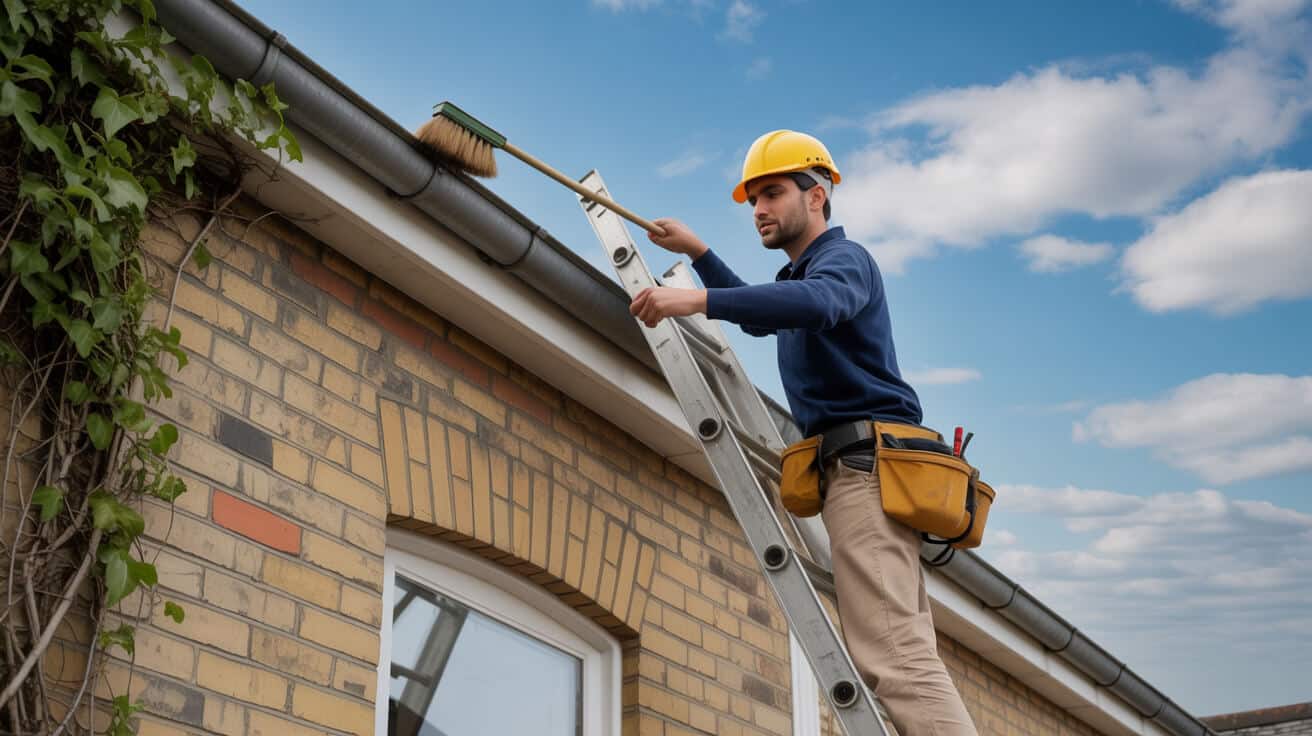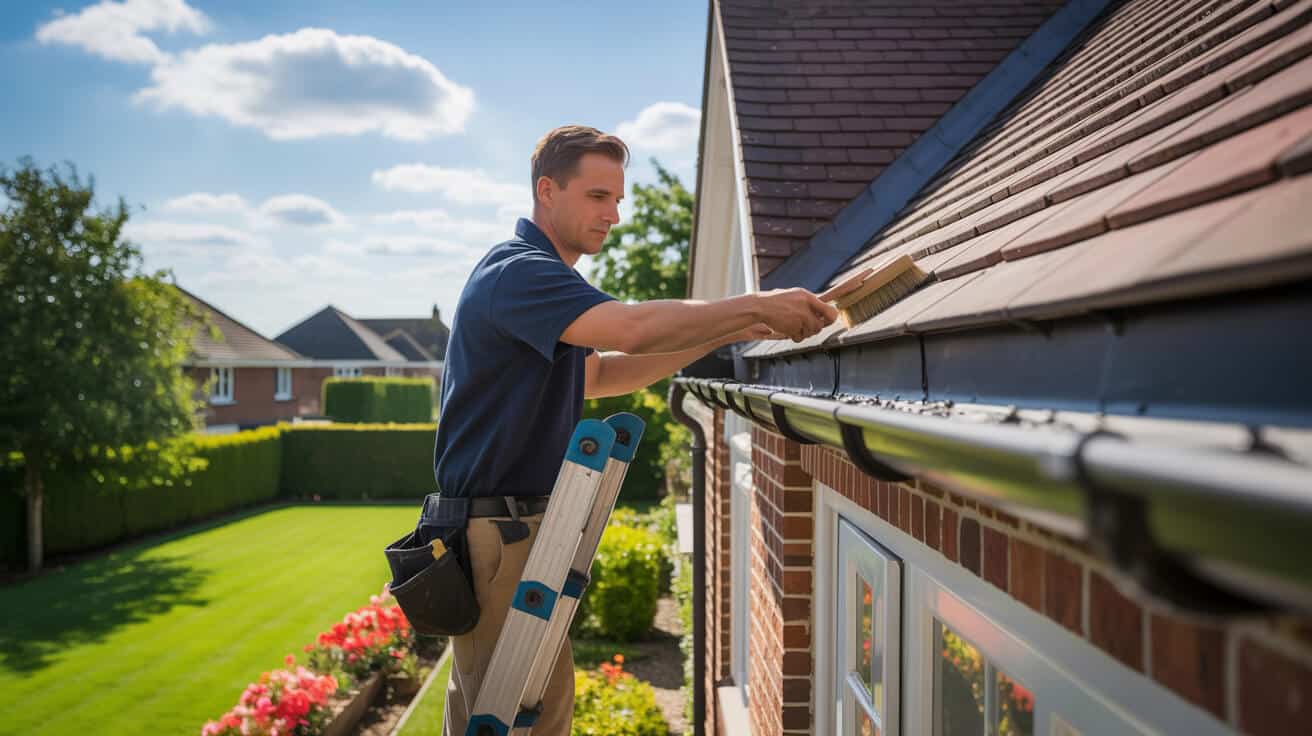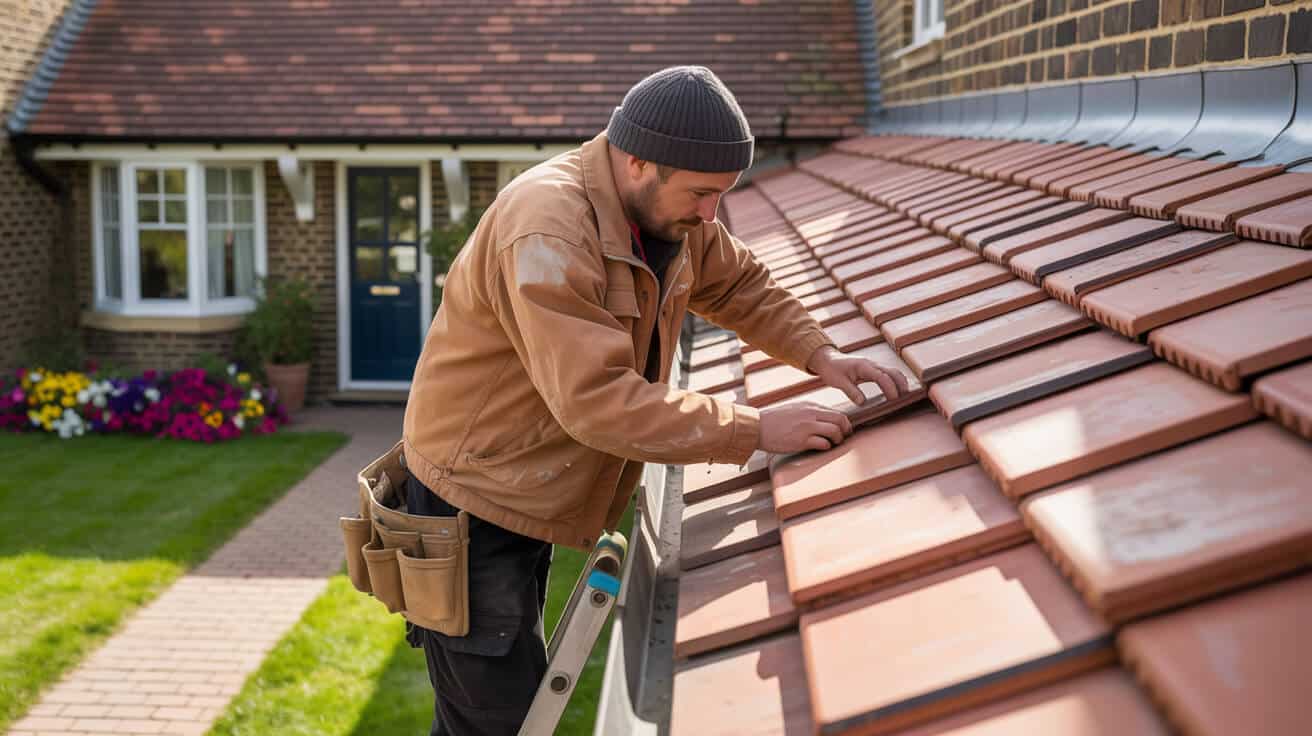 Building Your Property Maintenance Team When To Diy And When To Hire A Professional
Building Your Property Maintenance Team When To Diy And When To Hire A Professional

How Much Is Really at Stake When You Choose DIY or Professional for Property Maintenance?
Property maintenance is not a side project or an afterthought—it’s the scaffolding holding up your asset’s value, your reputation as an owner or facilities manager, and often the legal standing of your organisation. Every decision to pick up a wrench or dial a service firm ripples into insurance coverage, compliance, and possibly your biggest investment’s future. The UK landscape is littered with cautionary tales: a leaky tap patched on a Sunday becomes black mould in a spare room six months later; a swapped socket, done on instinct, voids a £30,000 insurance claim after a small electrical fire (Direct Line 2022).
What you repair today can haunt your policy and pocket for years to come.
Maintenance is about more than ticking to-do lists. It’s about knowing where your knowledge ends and risk begins. DIY feels smart, frugal, and self-sufficient—right up until it isn’t. The choice to “save a call-out fee” sometimes opens the door to headaches you can’t even see yet: regulatory breaches, botched hidden works, and warranty-crippling oversights. Getting clarity upfront—on safety boundaries, compliance, and real cost—is what separates the proud property owner from the one who’s always scrambling to clean up the past.
There’s a line. Crossing it isn’t tough—it’s tempting, especially with social media “how-to” fuel at your fingertips. But stepping over means you’re gambling with more than just your weekend. Owners, landlords, and managers who master this line-upfront—who can look at a dripping pipe, an odd creak, or scary paperwork and say “this is mine to handle,” or “this is a job for Hector Gauge and his team”—are the ones who actually sleep well at night.
Where Does DIY Actually Stop? The Hidden Hazards Behind Everyday Fixes

You know what’s dangerous? Not a burst pipe or a sparking socket, but the stuff you don’t notice—the slow leaks, the dodgy junction boxes, the damp hiding under the paint. Most headaches start with the good intention of “getting it done” and spiral into the territory you never meant to enter. What starts as pride in a solution can become embarrassment in front of your insurer, or friction with tenants who spot problems you didn’t see.
Hidden Triggers That Signal “Time to Call In the Pros”
- Electrics: If breakers trip more than once, if you see melting, buzzing, feel warmth, or spot DIY legacy wiring, step away and book a Part P-certified pro. The moment your job means opening a consumer unit or touching anything sharing a circuit with the kitchen or bathroom, it’s “game over” for home fixes.
- Plumbing Maze: Any sign of water behind the walls—stains, a musty smell, pooling around fittings—deserves an expert plumber. DIY patching only masks the issue and multiplies the cost and paperwork down the line.
- Structure and Damp: Wall cracks spanning corners, warping wood, or floors starting to “bounce” demand a survey or at minimum, a competent multi-trader. It’s now about asset protection, not cosmetics.
DIY done right saves pennies. DIY at the wrong moment can cost everything you own.
Let’s talk statistics: Over 3,000 house fires have been traced back to amateur electrical jobs in UK homes every single year (hertfordshire.gov.uk). And shockingly, one in seven property insurance claims is either reduced or outright rejected because the original fix wasn’t up to code or is missing compliant paperwork (directline.com).
Here’s your takeaway: if you’re unsure, the best move is to preserve the scene, photograph everything, and call a certified professional. That’s not a weakness. That’s the move of someone who wants to own property—not be owned by its problems.
Which Everyday Property Tasks Are Fair Game for DIY—And Where Does It Get Risky?

Feeling handy isn’t a bad thing. Wanting to keep budget in your control—or just handle things quickly—can absolutely make sense, if you know where the risk line is drawn. But the gap between practical initiative and silent liability is wider than most managers ever realise.
Green Lights for DIY: The Safe Zone
- Painting & Decorating: Sanding, painting, and minor wallpaper fixes are your domain, unless there’s evidence of damp, blistering, or old stains that might signal a deeper fault.
- Carpentry Lite: Installing shelves, tightening hinges, or re-hanging an interior door—these are safe but stop if you reveal hidden rot, warped frames, or underlying water marks.
- Straightforward Plumbing: Swapping out tap washers, clearing U-bends, or isolating a minor leak (visible and surface-level) is sound—with the catch that if you’re guessing, or it could affect the main supply or hidden pipes, that’s the edge of your map.
- Lighting & Detectors: Bulb and battery swaps are DIY, but don’t force a stuck fitting or tamper with mains connections.
The smarter move is not just doing—it’s logging what you did, when, and if you spotted anything odd.
What about the stop signals? If you:
- Can’t clearly explain each step before starting;
- Need a certificate, logbook entry, or insurance sign-off;
- Encounter gas pipes, fixed electrics, or structure;
– those jobs cross decisively into professional-only territory. There’s no shame in that. In fact, skipping the documentation or taking a shortcut is what costs landlords, block managers, and even homeowners thousands later—sometimes in court, sometimes with the bank.
Photo evidence, time-stamped notes, and the habit of “better safe than sorry” transform your occasional DIY into responsible asset care. If you can’t label exactly where your comfort zone stops, get a checklist from a pro—cheaper than any repair gone wrong.
How Do UK Laws and Insurance Police the Line Between DIY and Professional Maintenance?

In today’s risk landscape, property maintenance isn’t just about fixing things—it’s about staying firmly inside the law and the policy wording. Building codes, the national Part P for electrics, Gas Safe accreditation for heating, and ever-tightening insurance policies have made “do it yourself” a shrinking ground. It’s not just about the fix, but the paperwork proving the fix was legal.
The Legal No-Go List for DIY
- Electrical: Only a certified Part P electrician may update, instal, or rewire any socket, unit, or fixed power. Even moving a kitchen socket or safely rewiring a lighting rose requires documentation to be legal and claim-worthy (rcdelectrician.co.uk).
- Gas & Core Plumbing: Anything beyond a U-bend or a simple isolation valve—especially permanent fixtures, boilers, or gas cookers—is sole territory for Gas Safe registered engineers. Certain water supply works require WaterSafe listed operatives too, as they trigger notification under UK water law (watersafe.org.uk).
- Fire Safety & Structural: Touching fire doors, alarms, or anything load-bearing? Council or third-party approval is usually a must, with a paper trail. Skipping this now leads to failed inspections—and an empty insurance cheque—later.
- Recordkeeping: Insurers are strict. Claims need signed certificates, digital job logs, and “before/after” photos just to move to assessment. If you have no log, expect delays or denials (which.co.uk).
Without compliant documentation, the job doesn’t officially exist—and neither does your insurance when you need it.
Best practice? Even for minor jobs, create a digital log, save receipts or photos, and keep certificate PDFs on file. That’s not paperwork for paperwork’s sake—it’s your future proof when a claim, sale, or tenant dispute arises. If it feels even a little outside your knowledge, stop, log, and reach for a professional who’ll bring the proof to back you up when stakes are high.
How Should You Structure a Maintenance Team That’s Both Nimble and Bulletproof?

When it comes to maintenance, you don’t get points for bravado. Every landlord, contractor, or facilities manager needs a system that catches issues before they become crises—and then escalates them, logs them, and ticks every compliance box. That’s where clarity of roles, the right escalation playbook, and digital record-keeping leap ahead of even the most ambitious DIYer.
Models That Make You Safer, Not Just Faster
- Generalist First Response: For single-site or small portfolios, a trained manager (or yourself) carries out basic troubleshooting, documents all work, and has a black-and-white rule to escalate anything outside their comfort, competence, or certificated skill (pmsuccess.com).
- Dedicated Compliance Silo: In multi-property or block settings, split operations into repair, compliance, and admin “lanes,” so no one makes a fix without parallel documentation or sign-off (totaljobs.com).
No matter your model, these rules build resilience:
- Digital logs for every task (photos, signatures, dates).
- Required annual audits: certificates, warranty checks, incident reviews.
- Written playbook: if the job is not on the “green list,” pause and escalate.
- Standing rule: if you’re solo, “act big”—log everything, prepare for the audit you hope never comes.
Systems built for clarity and caution keep your assets, records, and reputation intact.
Want a resilient structure? Stop leaving escalation to “gut feeling.” Let protocols and smart logs guide you—your future self will thank you.
What’s the Real Cost of Getting DIY or Maintenance Decisions Wrong?

Here’s the secret: what you don’t see, put off, or fudge today will cost you many times more—if not financially, then in time, stress, and reputation. Deferred repairs aren’t just a cost problem; they’re a multiplying risk problem. A slow leak under the floorboards becomes black mould, mushrooms into rotten timber, and chokes the value out of your flat. A small electrical shortcut, handled off the books, turns into an invalid insurance claim after a short-circuit fire.
The Invisible Enemies: Slow Damage, Compliance Voids, and Claim Denials
- Hidden Leaks & Damp: Moisture that drips quietly behind walls leads to structural decay, sudden “need it yesterday” callouts, and multi-thousand repair bills months down the line (padmagazine.co.uk).
- Certifications Skipped: No EICR or Gas Safe sign-off can mean a failed sale, let alone a lost tenant and a voided deposit at checkout (landlordzone.co.uk).
- Unreported Upgrades: Even the simplest upgrade—a new tap, changed socket, added downlight—can derail your claim or sale if no digital “paper” exists. Qualified, retrospective sign-off (if you can get it) is expensive.
Low upfront cost is a false victory—risk piles up until you pay for it fully, or worse, legally.
Keep risk escalation out of your portfolio: Never defer a safety risk; never skip the logbook. Escalate, qualify, and document. A little hesitation now beats a courtroom, a compliance audit, or wrangling with your insurer in the future.
What Should Your Vetting Process Be When Sourcing a Maintenance Professional?

You don’t pick trades the way you pick pizza. Anyone stepping onto your property with a toolbox also brings the power to reinforce—or shatter—your compliance, insurance, and asset value. Proper vetting isn’t about cynicism; it’s about business sense and future-proofing what you’ve built.
Zero Shortcuts: How to Get the Right Pro, the First Time
- Real Credentials: Look for City & Guilds, NVQ, Clean DBS, and specific accreditations: NICEIC, Gas Safe, or membership of professional bodies. Bonus: check for IPAF/PASMA for access jobs and PAS 2030 for sustainability fits.
- Show the Docs: Any worthy contractor provides insurance certificates, job sheets before and after, and hands over digital logs without asking. No paperwork, no job.
- Transparent Everything: Top-tier outfits spell out the job, price it, explain escalation points, and show you the audit trail before you need it (openrent.co.uk; checkatrade.com).
- Digital as Default: In 2024, digital signatures and WhatsApp triage chats are the new normal. If a firm is still “old school,” ask yourself if their process can protect you in a claim or audit.
The difference between a compliant fix and a costly mistake often comes down to a single photo or missing PDF.
All Services 4U sets the curve: rapid response, full staff certification, insured work plans, and digital records that are as easy to retrieve as your bank statement. That’s not just convenience—it’s future-proofing your investment by making your maintenance process audit-ready by default.
What Does a Future-Proofed Maintenance Strategy Look Like?

A modern property maintenance strategy is not a folder of checkboxes—it’s a living process that intercepts risks early, creates digital records instinctively, and always protects both your outlay and your compliance. The biggest “win” is flow: little problems become opportunities, not compliance bombs.
Building a Practical, Resilient Strategy
- Run a Digital Log: Every fix, photo, and sign-off goes into an asset log—easy to search, brilliant for claims or re-lettings. A WhatsApp chat history can be your best friend in a dispute.
- Annual Compliance Sweep: Book an annual audit with certified contractors. Save the logs, certificates, and renewal reminders where your hand can reach them.
- Escalation Protocols: Know—the moment you’re unsure—how to stop, document, and pass the task up the line. Download the Hector Gauge “DIY First” triage checklist; it’s a lifesaver before panic sets in.
- Staff & Tenant Education: Make sure everyone knows when a maintenance job is green-light DIY and when it’s red-alert “call the contractor.” This is how you catch silent risks—before they grow teeth.
True peace of mind is never accidental—it’s the result of habits, not heroics.
With over 20,000 compliant jobs under its belt and a sky-high trustpilot rating, All Services 4U doesn’t just fix; it modernises the entire way you approach asset care. Their system is your shield against spiralling issues—and your guarantee of a smooth claim or sale in the future.
What Sets All Services 4U Apart in the Property Maintenance Market?
You want property care that’s frictionless, future-proofed, and never leaves you exposed in front of your insurer, your tenant, or your accountant. All Services 4U delivers exactly that, scaling from single units to vast portfolios, always with compliance and documentation as the backbone.
- Certified Pros: Every technician is City & Guilds qualified, DBS checked, and insured for at least £5M. You get access to IPAF, PASMA, and specialty-qualified teams for even the most demanding jobs.
- Digital 360°: Photos for every stage, PDF handovers, WhatsApp status updates, and a compliance kit that’s audit-ready, not just “good enough.”
- Elite Reputation: Thousands of 5-star jobs and glowing Trustpilot reviews don’t happen by accident—they come from process discipline and an obsession with making maintenance stress-free for owners and managers.
- Responsive, Transparent, & Accountable: Four-hour callout times, clear up-front pricing, honest escalation policies, and a culture of fixing the issue right the first time.
- DIY Support When You Want It: The Hector Gauge “DIY First” checklists and triage chats mean you can safely judge your own repairs, then escalate instantly if the risk or paperwork grows.
A maintenance provider is your partner, not just your safety net. The right one makes prevention as easy as rescue.
Professional process beats luck and improvisation. When you need a fix, a certificate, or ironclad protection for your investment, you want the brand that industry pros recommend—because your business or portfolio deserves nothing less than bulletproof.
Take Ownership—Book Your Check or Service With All Services 4U Now
Procrastination is like compound interest on risk—it grows, quietly and relentlessly, until it becomes unmanageable. Your property, your reputation, your bottom line: all deserve maintenance that is action-first and built for the future.
Whether you need a DIY clarity-check, an urgent rescue, or a plan that makes tenants, auditors, and insurers happy at first glance, don’t leave it to chance. Take control: book a risk-free triage assessment with All Services 4U. Enjoy full transparency, certified repairs, and digital documentation—every step. Sleep better knowing your biggest assets are in the hands of the pros who set the standard.
Frequently Asked Questions
How do you evaluate which property maintenance tasks are legally and practically safe for DIY?
Most property owners are comfortable with basic upkeep, yet a sharp boundary exists between low-risk jobs you can handle yourself and regulated work that must go to the pros. In the UK, this isn’t just about knowing your way around a screwdriver—it’s dictated by law, insurance fine print, and what you might not see beneath the surface. Tackle only those tasks that are fully visible, low-voltage, and non-structural—like painting, flat-pack furniture, or tightening a wobbly handle. The moment electrical systems, gas, fire safety, structural alterations, or concealed water/gas pipes come into play, you’re not only risking personal safety but can breach UK regulations and void insurance. Government fire statistics show that up to 8% of accidental house fires originate from DIY electrical attempts gone wrong, often voiding any insurance payout (Home Office, 2023).
Which common jobs can you safely attempt, and where does the law draw the line?
- DIY-Safe: Interior painting, changing lightbulbs, basic faucet washer replacements, assembling shelves, tightening hinges.
- Always Use a Pro: Anything behind walls or under floors, wiring upgrades, boiler/gas fitting, fire alarm installation, major structural changes, jobs that create or cover “notifiable” work.
Attempting more complex jobs exposes you not just to repair headaches, but criminal liability. If you’re unsure whether a task qualifies as notifiable or regulated, one consult with a certified technician—like All Services 4U—can prevent months of regret and thousands in lost value.
What you can’t see is often where the risk and the real cost live. The best return on your time may be knowing when to call in backup.
What unmistakable warning signs show a property issue requires urgent professional intervention?
Persistent electrical faults, leaks that keep coming back, or damage that worsens with each fix are never problems to patch or ignore. In property maintenance, your senses are your first safety net: repeated circuit tripping, discoloured sockets, unexplained damp, cracks that grow week by week, or stained ceilings all point to issues far beyond surface-level quick fixes. Insurance data indicates that 15% of property loss claims are denied or reduced due to previous DIY “repairs” that actually made things worse (ABI, 2023).
When should you immediately stop and escalate to a certified professional?
- Electrical: Buzzing outlets, burning smells, heat around sockets, frequent tripping—any one of these is a full-stop moment.
- Water: Leaks or stains that return after repair, rapidly spreading damp, warped flooring, or sagging ceilings.
- Structure: Cracking walls, sloping floors, jammed doors and windows, or any new defect after heavy weather.
- Utilities: Sudden loss of power, water not flowing or draining, gas odours.
If you can’t diagnose the cause, or if a fix doesn’t hold, escalation isn’t optional—it’s a necessity. Always photograph and log changes. A documented handoff allows experts like All Services 4U to diagnose accurately, giving you not just a fix but a compliance trail essential for resale or future claims.
Trust the instincts that make you pause—a well-timed call for help protects your property from hidden catastrophes.
How do UK regulations and insurance policies specifically limit property owners’ DIY options?
UK law divides property maintenance into a clear “safe zone” and a firmly guarded “pro-only” space. Anything involving gas, electrical wiring beyond simple like-for-like swaps, or adjustments to fire systems or escape routes falls solidly on the restricted side. Property owners can lawfully paint, decorate, hang curtains, and undertake simple plumbing repairs, but installing new sockets, tweaking heating systems, or any alteration that requires inspection, sign-off, or certification, must be left to accredited professionals.
The insurtech sector reports a consistent spike in denied claims when DIY modifications leave a trail of uncertified work—especially between tenants or during property sales (Zurich, 2023). For rental properties, this line is even sharper: landlords are required to provide annual gas safety checks and five-yearly Electrical Safety Certificates, with all remedial work undertaken by those with the right credentials.
What property works are strictly off-limits to DIY, by law and insurance?
| **System** | DIY Scope | Mandatory Accreditation |
|---|---|---|
| Electrical | Replace bulbs, like-for-like plates | Part P, NICEIC, EICR required |
| Gas/Heating | No DIY—any involvement is illegal | Gas Safe Register only |
| Plumbing | Traps, washers, visible tap work | WaterSafe, WRAS, notified for mains |
| Fire Safety | No DIY for alarms, doors, routes | FSO 2005, certified assessors |
For each system, evidence of professional sign-off is often non-negotiable—without it, both lender and insurer can walk away after an incident. One missed certificate can cascade into major asset losses.
A professional delivers not just the repair, but the legal protection and documentation that preserve your rights and property value.
How should you approach the decision: DIY, call a pro, or escalate in a crisis?
If you can describe the full process, have the right tools, and the job doesn’t touch protected systems, DIY is reasonable. When you lack any of those elements, especially understanding of system depth or documentation requirements, the prudent move is calling in a pro. Whenever safety, health, or continuity of service are at risk—lost power, water near electrics, suspected gas leak, visible fire or structural compromise—immediate escalation is your only responsible option. Every hour’s delay increases downstream cost, operational disruption, and liability.
Smart owners and facilities managers pre-plan these thresholds. For commercial or multi-property assets, a live digital log (with photo uploads and mapped escalation paths) can cut loss and downtime by up to 25% compared to ad hoc response (British Property Federation, 2022). All Services 4U incorporates first-line investigation, rapid escalation, and detailed record-keeping as core workflow, ensuring your choices always reinforce asset value rather than undermine it.
Practical triage: When to act, call, or escalate
- DIY green light: Cosmetic upgrades, hanging fixtures, minor visible adjustments.
- Professional required: Wiring, boiler, complex leaks, roof/gutter repairs, hidden systems.
- Escalate now: Major leaks, non-brief power outage, shifting structure, risk to life or property.
In every case, establishing the right boundaries early and defaulting to safety over cost-saving protects not just your property, but your long-term peace of mind.
Which maintenance team structure best matches your property type and risk exposure?
Whether you own one flat or a commercial portfolio, the right maintenance team structure reflects not just what you manage—but how much risk you can afford to carry solo. Private homeowners thrive with a DIY skill-set and an “on-call” pro for certifications. Landlords and portfolio managers get the best results blending in-house generalists (for speed) with a network of vetted, trade-accredited contractors (for compliance and system depth). Digital workflows—using logbooks, photos, and escalation triggers—now underpin every efficient, audit-proof operation.
Industry research shows that properties managed with blended, documented teams see claims processed almost twice as fast and suffer fewer legal or reputational disputes (PropertyMark, 2023). Opting for “accountable agility”—rapid first fixes moving directly to certified pro escalation—means costly errors or compliance lapses become rare exceptions rather than expected headaches.
Team options: Pros, Cons, and Scaling Factors
| **Team Type** | **Strengths** | **Risks or Limits** |
|---|---|---|
| DIY + Pro Partner | Cost-saving, flexible | Skill mismatch, uncertain coverage |
| In-House Generalist | Fast, consistent, knows site well | Training gap, higher limit costs |
| Accredited Network | Full compliance, system reach, scale | Requires tight digital handover |
For multi-let properties or high-value assets, make clear digital documentation a contract feature. Escalation clarity pays for itself in lower claim denials and higher client retention. The All Services 4U team shifts this burden off your plate through digitised, seamless transfer between on-site and accredited specialist support, ensuring your compliance logbook is always audit-ready.
No one ever loses value to over-documenting—but plenty lose tens of thousands trying to fill gaps after the fact.
How do you design a future-ready workflow that transitions seamlessly from DIY upkeep to professional compliance?
A future-proof property maintenance workflow always starts with clarity about your limits—map out the tasks you can complete confidently and legally, and establish formal escalation paths for everything else. This means building relationships with accredited trade professionals, setting up digital tracking for every fix (from receipts to photos, date-stamped), and regularly reviewing regulatory change—recent UK compliance updates can shift overnight and invalidate years of “standard practice.”
For landlords, it’s increasingly critical to contractually define digital record-keeping and escalation ownership with every agent or building occupant. This not only speeds up repairs but ensures audit trails are always in place for claims, resales, or compliance spot-checks. Providers like All Services 4U built their service model around this digital-first, multi-trade logic—meaning you benefit not just from expertise but from continuous workflow evolution as regulations and standards tighten.
Steps for an airtight transition
- Map out your safe DIY boundary; put it in writing or on your maintenance dashboard.
- Partner with multi-trade, accredited pros and formalise digital record exchange.
- Use apps or cloud systems to log all interventions, receipts, and compliance proofs.
- Communicate escalation thresholds to every tenant, contractor, or agent—this reduces finger-pointing when issues arise.
- Audit your process against up-to-date standards at least every year; what passed last year may not today.
Resilient workflows don’t just prevent headaches—they actively build your property’s reputation, enhance resale/letting value, and safeguard both your asset’s history and your own peace of mind.
Every tidy job log is a shield against tomorrow’s audit. What you invest in process today will come back tenfold in risk saved and value preserved.
All Services 4U, under the guidance of Hector Gauge, combines multi-trade technician agility, compliance fluency, and digital operational workflows. Whether you’re managing a single flat or a city portfolio, the standard keeps moving up—so should your systems.



